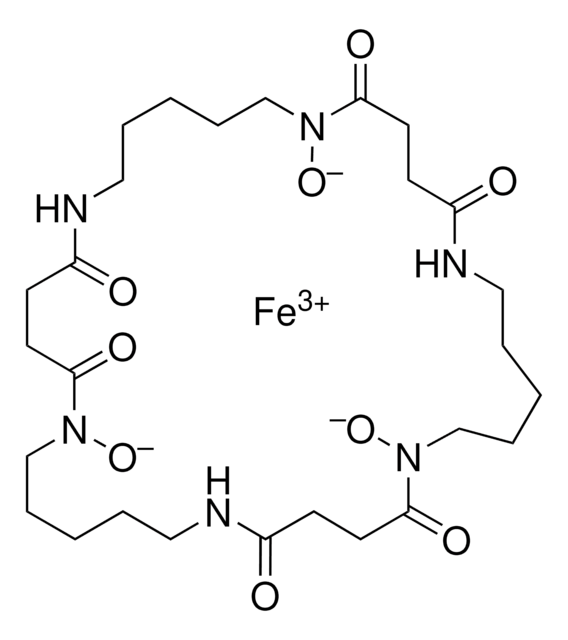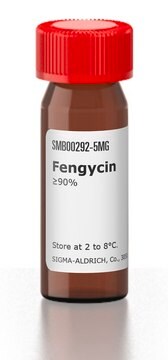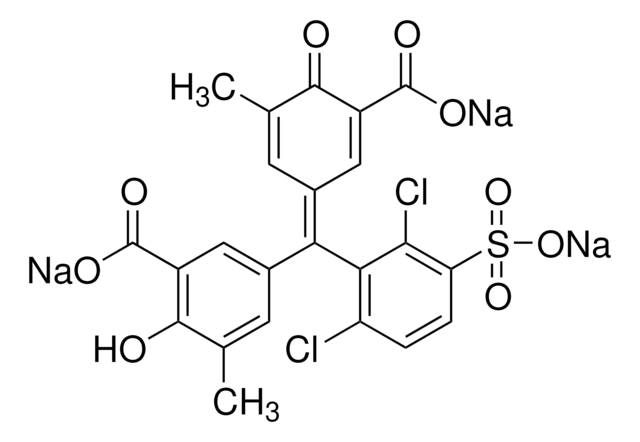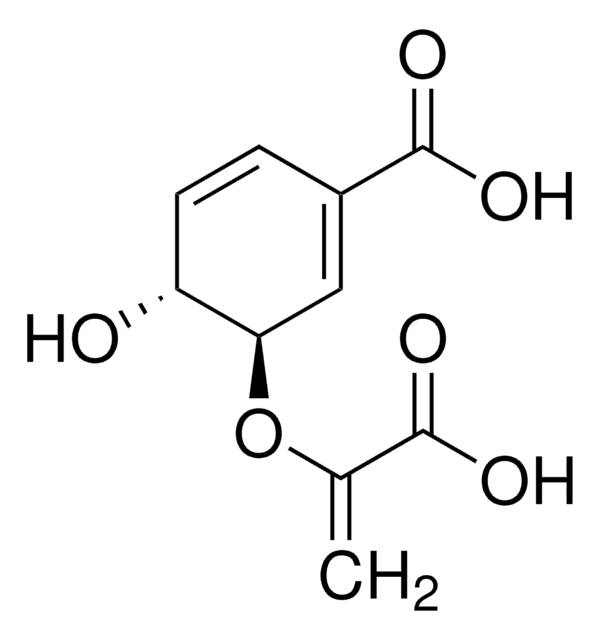E3910
Enterobactin
from Escherichia coli, ≥98% (HPLC)
Sinónimos:
Enterochelin
About This Item
Productos recomendados
origen biológico
Escherichia coli
Nivel de calidad
Análisis
≥98% (HPLC)
Condiciones de envío
wet ice
temp. de almacenamiento
−20°C
InChI
1S/C30H27N3O15/c34-19-7-1-4-13(22(19)37)25(40)31-16-10-46-29(44)18(33-27(42)15-6-3-9-21(36)24(15)39)12-48-30(45)17(11-47-28(16)43)32-26(41)14-5-2-8-20(35)23(14)38/h1-9,16-18,34-39H,10-12H2,(H,31,40)(H,32,41)(H,33,42)/t16-,17-,18-/m0/s1
Clave InChI
SERBHKJMVBATSJ-BZSNNMDCSA-N
Descripción general
Aplicación
- as a positive control in tryptophan fluorescence quenching experiments
- as a reference standard in high performance liquid chromatography to quantify Kosakonia radicincitans culture medium siderophores
- in the crystallization reservoir to remove iron contamination in the medium and in Fe-enterbactin binding studies
Acciones bioquímicas o fisiológicas
Código de clase de almacenamiento
11 - Combustible Solids
Punto de inflamabilidad (°F)
Not applicable
Punto de inflamabilidad (°C)
Not applicable
Certificados de análisis (COA)
Busque Certificados de análisis (COA) introduciendo el número de lote del producto. Los números de lote se encuentran en la etiqueta del producto después de las palabras «Lot» o «Batch»
¿Ya tiene este producto?
Encuentre la documentación para los productos que ha comprado recientemente en la Biblioteca de documentos.
Los clientes también vieron
Nuestro equipo de científicos tiene experiencia en todas las áreas de investigación: Ciencias de la vida, Ciencia de los materiales, Síntesis química, Cromatografía, Analítica y muchas otras.
Póngase en contacto con el Servicio técnico




![(±)-(E)-4-Ethyl-2-[(Z)-hydroxyimino]-5-nitro-3-hexen-1-yl-nicotinamide ≥97%](/deepweb/assets/sigmaaldrich/product/structures/285/524/99543643-31d0-4c4f-b8da-9b1f872868ad/640/99543643-31d0-4c4f-b8da-9b1f872868ad.png)




